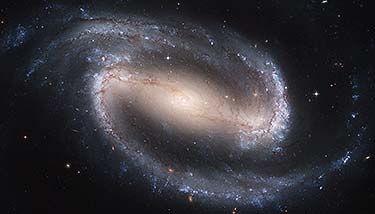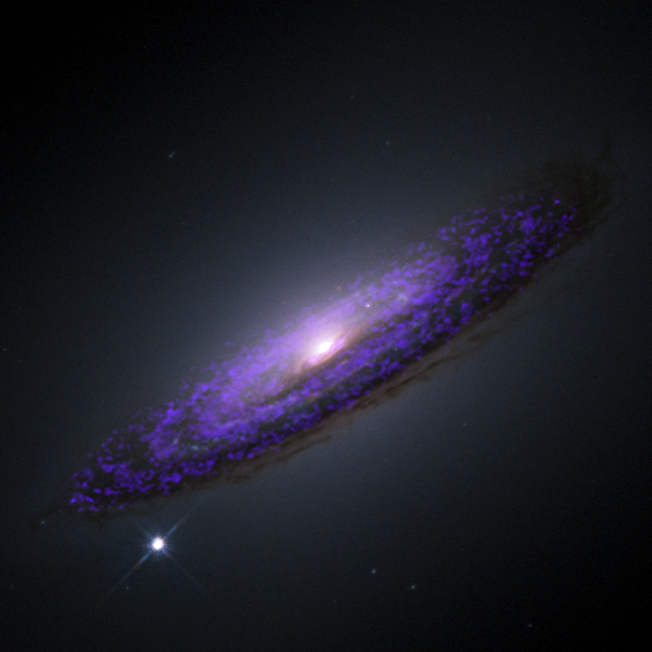
HST/ACS image of the barred spiral galaxy NGC1300, nicely illustrating bar-driven gaseous inflow and star formation.

Below are descriptions of DPhil (PhD) projects I currently have on offer. All deal with galaxy formation and evolution, primarily through detailed studies of the dynamics and interstellar medium of nearby objects, and they include both observational and theoretical aspects. Understanding star formation and galaxy evolution is central to modern astrophysics, and those projects each contribute in their own way to this larger enterprise.
The projects are meant to cover a period of 3-4 years full-time, the standard length for an Oxford DPhil. This is short, so a full commitment is necessary to carry the projects forward and simultaneously acquire all the skills that a finishing DPhil student is expected to possess. If you are interested by one of the projects and would like to discuss it further, please contact me as soon as possible.
There is actually considerable freedom in tailoring the projects to one's own interests, and I would expect that as time passes, every student will gradually develop his/her own research directions.
Note also that even though many projects may be on offer, I do not intend to supervise more than 2-3 students at any one time.
Weighing Supermassive Black Holes
Weighing Supermassive Black Holes
(supervisor Martin
Bureau; collaborator Michele Cappellari)

Understanding the formation and evolution of galaxies is central to much of contemporary astrophysics. The relations between black hole mass and various galaxy properties imply a tight connection between the growth of central supermassive black holes (SMBHs) and that of galaxies, and these relations now underlie a staggering number of observations and simulations. However, the number of reliable SMBH mass measurements is small, and the number of independent measuring methods even smaller. A team I lead has recently shown that the dense molecular gas of galaxies is the best tracer of their circular velocities, and thus of their masses. Most importantly, following the first SMBH mass measurement published in Nature, the team has now shown that these measurements are both much more accurate and much easier to carry out than with other methods. It is thus time to scale up those efforts and renew our knowledge of SMBHs.
As part of the WISDOM team (mm-Wave Interferometric Survey of Dark Object Masses), the student will thus use current mm/sub-mm telescopes to pursue a programme of SMBH mass measurements in a large sample of local galaxies spanning a range of morphological types, masses, and nuclear activities. This will primarily use ALMA, the largest ground-based telescope project in existence, on which WISDOM has recently received large allocations of observing time. There are thus much data in hand already, with more to come, and the tools necessary to model the velocity fields and estimate uncertainties have already been developed. The project will thus significantly increase the number of reliable SMBH masses available, and it will revolutionise our understanding of the co-evolution of SMBHs and galaxies.
In parallel, exploiting the revolutionary sensitivity and angular resolution of the same ALMA observations, the student will for the first time probe individual clouds orbiting SMBHs, measuring their sizes, luminosities, and dynamics, and constraining the cloud population properties. This is essential to establish whether the properties of these clouds are universal, or whether they depend on the SMBH and galaxy properties, in turn affecting their ability to turn into stars or otherwise feed the SMBHs. This will yield a first look at the physical conditions in the vicinity of SMBHs.
To go back to my Home Page, click here:
![]()
Last modified: Thu Sep 21 19:39:19 BST 2017